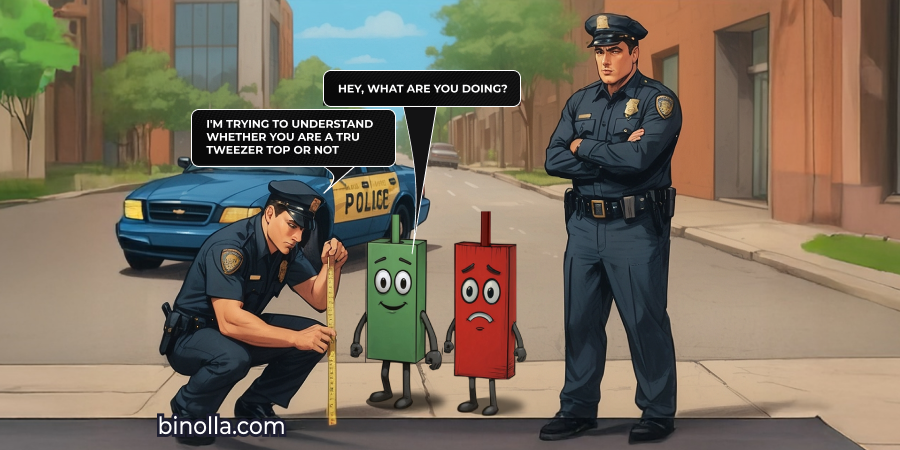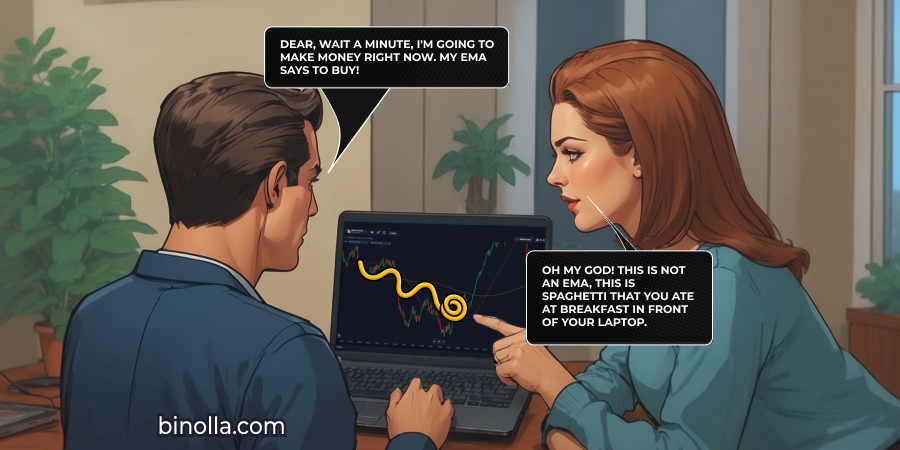Divergence Strategies in Trading: How to See It And Use It for Making Gains in the Financial Markets

Divergence and convergence allow market participants to find entry points in advance. Many professional traders use it along with other strategies to buy or sell various types of assets. While divergence may seem complex at first sight, by reading this article, you will grasp all the basics of this strategy, and by the end of it will be able to find this signal on charts.
Looking for trading opportunities with a reliable broker? Join Binolla now and start trading in a trustworthy and secure environment!
Contents
Key Takeaways
- Divergence is a special strategy allowing you to predict price reversals or trend continuation.
- There are four main types of divergence in trading.
- This type of strategy works in bearish and bullish markets.
- Traders can use additional technical analysis tools to increase their chances of profiting.
- Divergence can be used by both Forex and digital option traders.
Divergence Basics
Divergence is the difference in readings between the indicator and the price. For instance, when the price of an asset makes new highs, while the indicator shows lower highs, this is known as divergence and means that a reversal will occur soon. However, not all differences in readings lead to reversals. Find out more about the four main types of divergences from the table that follows.
| Type of Divergence | Results | Description |
| Bullish divergence | The price goes upwards | This divergence occurs when the price sets new lower lows, while the indicator starts to set higher lows. |
| Bearish divergence | The price moves downwards | This signal comes when the price sets higher highs, while the indicator sets lower highs |
| Bullish convergence | The price moves upwards | Bullish convergence occurs when the price sets new higher lows, while the indicator sets new lower lows |
| Bearish convergence | The price moves downwards | With the bearish convergence, the price sets lower highs, while the indicator sets higher highs |
Divergence Trading Strategies
Divergence is a special strategy that allows you to know about price reversals in advance. As you know it already, there are four main types of divergence, and we are going to show you all of them in various examples.
Bullish Divergence

To identify divergence, we are going to use MACD as this indicator is the most illustrative one when it comes to this type of signal. Bullish divergence occurs when the price sets new lows while the indicator starts to make higher lows. When you see such a situation in the chart, you can expect the price to start moving higher in the near term.
As for the signal, to trade bullish divergence, you need to draw a descending trendline. The signal comes when the price breaks above the descending trendline. Therefore, when this moment occurs, you can buy. As for digital options, traders can purchase a Higher contract when the price moves above the descending trendline.

When trading a bullish divergence, you should keep in mind that not all signals are relevant. In this example, we have the price making lower lows and the indicator making higher lows, which should suggest that the reversal is near. However, there is an area between the two lows of the MACD indicator where the histogram is above zero, which makes this signal irrelevant. If you see this happening, you should skip such a divergence and look for other signals.
Anthony Jackings, Top Binolla Trader
I often use various types of divergences in my trading practices. I can say that the signal offers high reliability. However, when trading with divergence, you should keep in mind two things. First, divergences can accumulate, which means that even if you find one, there is no guarantee that the situation will change right away. In some cases, the first divergence is followed by the second when the price makes another lower low and the indicator makes another higher low. The second trick is that sometimes divergence leads to a correction or sideways trading.
Bearish Divergence

The bearish divergence occurs when the price still moves higher and sets higher highs, while the indicator moves lower. In this particular example, the currency pair reaches new peaks, but at some moment, the divergence occurs, and the price breaks below the ascending trendline. This is a sell signal when you can open a trade. Digital options traders can buy a Lower contract once the trendline is broken.

Similar to the bullish divergence, in some cases, you shouldn’t pay attention to this signal. In this particular example, the price sets new highs, and the MACD indicator makes lower highs. But at some point, the histogram plunges below the zero level of the indicator. If this happens, you shouldn’t follow the signal anymore and use other strategies.
Bullish Convergence

Unlike divergence, convergence leads to trend continuation. The bullish convergence occurs when the price sets higher lows, while the indicator sets lower lows. To use this strategy, you can wait until the price retests the ascending trendline and then open the buy position when the quotes move higher. For digital options traders, the Higher signal comes when the price rejects the ascending trendline.
Devi, Top Binolla Trader
Convergence is more complex, but if you master it, you can demonstrate better results in trading. While this is not my main trading strategy, when I see convergence, I always react. What makes it more complex is the fact that, unlike standard divergence, which tells you about the possible reversal, when finding convergence, you can prepare yourself for the development of the trend.
Bearish Convergence

The bearish convergence occurs when the price sets lower highs, but the RSI indicator sets higher highs. In this particular example, the currency pair moves lower, and the RSI indicator moves higher. To sell an asset, you need to wait until the price tests the descending line and then starts moving lower. The same is relevant for digital options. You can buy a Lower contract after the price rejects from the descending line.
Trading Divergence with Bollinger Bands

To improve your trading performance, you can add Bollinger Bands. This indicator will help you find more precise entry signals when trading both divergence types. When it comes to the bearish divergence, the conditions are the same. You need to find the area where the price sets new highs and the MACD sets new lower highs.
Once you see this zone, the next thing that you need to do is to follow the Bollinger Bands indicator. The sell signal comes when the indicator line breaks below the middle line, as it is in our example. For digital options traders, this signal means that you can buy a Lower contract.

Traders can also use the confluence of divergence and Bollinger Bands when it comes to the bullish divergence. First, you need to wait until the price sets lower lows and the MACD indicator sets higher lows. Next, you need to check the Bollinger Bands indicator. Once the divergence can be clearly seen, wait for the price to break above the middle line. Buy when the breakout occurs. For digital options traders, they can purchase a Higher contract when the price breaks above the middle line of the Bollinger Bands indicator.
Recommendations for Trading Divergences
To improve your trading results, you should follow some important recommendations. Find some of the key ones before you place your first trade with this strategy:
- Use various confirmations. In this article, we have demonstrated how to use divergence with Bollinger Bands. Apart from this indicator, you can use various other technical analyses as well as drawing tools to confirm divergence signals. You can also use candlestick reversal patterns to empower your divergence strategy and find more precise entry points. Some traders also add volume indicators as the volume rises when a reversal occurs.
- Focus on divergences on higher timeframes. Divergences on lower timeframes may give a lot of false signals due to market noise. To avoid it, you should switch to higher timeframes and try to find this signal there. Keep in mind that there will be a lower amount of signals, but the results will be better.
- Do not trend against strong trends. Whether you find divergence or not, you should see the major trend and try to trend along it. If divergence leads to a counter-trend signal, you had better avoid it. For instance, if you have an uptrend on the 4-hour chart and a bearish divergence on the hourly chart, you should skip this signal and wait for other opportunities.
- Check for breakouts and trendline breaks. When trading with divergence, you can check whether the price breaks above or below key levels. This allows you to avoid early entries and improves your trading timing.
- Set stop losses and take profit levels. Always use protective orders when trading with divergence. You can place stop losses beyond local swings to protect your trade from excessive risks. When it comes to targets, you can check for support/resistance key levels or simply calculate your targets.
- Try various technical indicators. We have demonstrated how to trade divergence with MACD. However, you can also use RSI or stochastic, as well as AO, to identify divergences. Experiment before you start using any of the indicators in your trading sessions.
- Review your trades. Record all your trades in a special journal from which you can check them later and review. By doing this, you can work on your mistakes.
- Let the divergence develop. Do not open a trade right away. Wait for confirmation before entering the market.
- Check the strength of divergence. Do not trade divergence in the middle of the range-bound market with unclear direction.
Advantages and Disadvantages of Trading with Divergence
Trading with divergence has both pros and cons. Here are the strongest benefits and drawbacks of using this strategy in your trading sessions:
Pros:
- Early reversal signals. When trading with divergence, you can see that the price is likely to reverse in advance. While the signal comes later, you will have enough time to prepare yourself.
- Divergence can be used on different timeframes. This strategy can be applied to minute, hourly, daily, and even monthly charts. However, on lower timeframes, you can expect a lot of false signals.
- Divergence can be found with different indicators. You can use MACD (the most popular indicator for pinpointing divergence), RSI, Stochastic, and others.
- Higher risk reward. Divergence often leads to a strong price momentum, which means that you can expect higher profits when using this signal correctly.
Cons:
- Divergence can give false signals. Not all divergences lead to reversals or trend continuation. If a bullish or a bearish divergence occurs during a strong trend, there may be no price reversal.
- Divergence may not work in choppy markets. Instead of providing you with a reversal signal, divergence may lead you to false entries.
Conclusion
Divergence may provide you with strong market opportunities, as it often tells you about the upcoming market reversal or strong trend continuation (convergence). While divergence may seem a complex strategy, after practicing it for a while, you will be able to find it on charts without any difficulties. By using this type of signal, you can empower your trading strategies and improve your trading results.
FAQ

What Does Divergence Mean in Trading?
Divergence in trading means that the price and the indicator go in opposite directions. This tells traders that a reversal can occur (or the price may continue to move in the previous direction in case of convergence).
Is Divergence a Reliable Strategy for Trading?
Yes, divergence is a reliable trading strategy that allows you to predict future price reversals. However, you should be alarmed as divergence may accumulate and sometimes lead to nothing.
Which Indicator is the Best for Divergence?
MACD, RSI, and Stochastic are the most popular indicators for divergence trading. Traders often use MACD as the main technical analysis tool.
What is the Win Rate for Divergence Signals?
The profitability of divergence strategies is about 65-75%.







